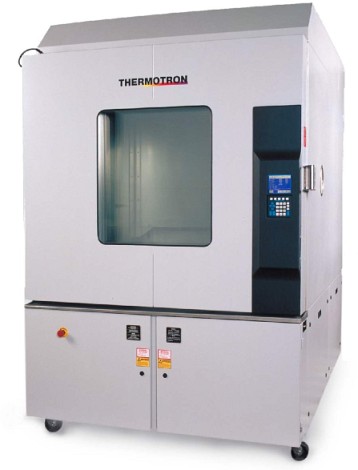Chamber construction is one of the most important considerations which must be assessed before committing to purchasing a chamber. Most chambers are painted on the outside and lined with stainless steel on the inside. But neither the exterior nor interior "looks" convey true construction quality. When selecting, examine the specification details closely -- you will see differences that can significantly affect the chamber's long-term reliability and durability. The critical differences pertain to the manner in which seams are connected for the stainless steel liner. Are the seams welded, pop-riveted, or screwed together? In what way are the ports fastened to the stainless steel liner and the outer cabinet? AMAZON multi-meters discounts AMAZON oscilloscope discountsWhen leaks occur in the stainless steel liner, a route is created for moisture to travel in and out of the chamber, especially when the chamber is used for temperature and humidity testing. The humid air in the chamber finds the leak and condenses in the insulated area. Most manufacturers of chambers use fiberglass insulation much like that which is found in the walls and attics of homes. When moisture condenses on the insulation, it becomes saturated like a sponge and loses its capability to insulate. The walls of the chamber then have less insulation, and that can affect the temperature and humidity performance. The water in the insulated space eventually will corrode (rust) the outer sheet metal (which is not stainless steel) and allow water to leak onto the floor. A chamber with continuously-welded seams is much less likely to develop leaks than a chamber assembled with other construction methods. Pay careful attention to the design of the access ports. As the pressure in the chamber fluctuates up and down during temperature changes, the walls will deflect in and out. The ports connect the inside chamber to the external cabinet. As the inside walls move from the expansion and contraction of air, the port transfers that movement to the outer cabinet. Therefore, the connection between the port and the chamber must be extremely durable to withstand the repeated deflection. Chamber manufacturers utilize various methods to install ports, ranging from pop-riveted and caulked to fully welded. As noted earlier, a welded port is much more durable than other fastening methods. After a chamber is used for certain period of
time, another design or construction compromise may be noted may
develop in the areas where the refrigeration lines penetrate the
stainless steel chamber. The refrigeration lines (tubing) are normally
made of copper. If any sharp edges come in contact the tubing,
a refrigerant leak may develop. A proven method for eliminating
this friction is to install the tubing in sleeves where it penetrates
the chamber. As movement occurs, the lines will not come in contact
to sharp edges. |
top of page
